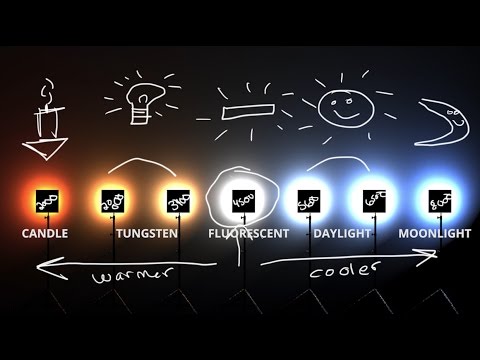- Technology Advancements in Lighting Bring Big Changes:
The changing landscape of the lighting industry can throw new things at you very quickly. Most of us have lived our whole lives only looking at the wattage of an incandescent bulb before we purchase. The colors of incandescent light remained pretty consistent, but higher wattage meant more light. With incandescent lights being replaced by newer and better technology, we are also seeing many more insider lighting terms reaching the mainstream.
Today, let’s talk about color temperature also referred to as CCT (Correlated Color Temperature). Color temperature has nothing to do with heat, it is the easiest way to describe the characteristics of the light we see. Color temperature works on a scale of Kelvins and covers the entire visible light spectrum. You can find the color temperature of a bulb right on the packaging, it will be shown as a number followed by a “K“.
Lighting Color Temperature:
Generally speaking, color temperature falls into one of three ranges:
- 2700K through 3500K. This is the “warm white” side of the spectrum, and will closely match the look of traditional incandescent bulbs. Soft and intimate, the orange-yellow tint to warm white bulbs are a comfort zone for many people. Warm white bulbs are great in the living room and bedroom at home, as well as in restaurants, libraries, and other intimate settings.
- 4100K. Bulbs with a color temperature around 4100K are known as “cool white”. Sitting in the middle of the spectrum, it is a more neutral white light. Cool white bulbs are popular in office and retail settings.
- 5000K through 6500K. Bulbs in this color temperature are known as “Daylight” because the light given off closely matches the light you experience at noon on a sunny day. Because of this, Daylight bulbs can actually help fight against Seasonal Affective Disorder, giving you a fuller light, you normally do not get on dark, dreary winter days. Daylight bulbs have more much more blue than orange in the light, so it may be a bit too harsh for certain settings.
Choosing a Color Temperature :
Choosing a color temperature can seem daunting at first, but just remember the 3 basic terms: Warm White, Cool White, and Daylight, and you will have no problem finding the correct light in your life. For more information on choosing the right color lighting for your facility contact CSL Technology Solutions.


